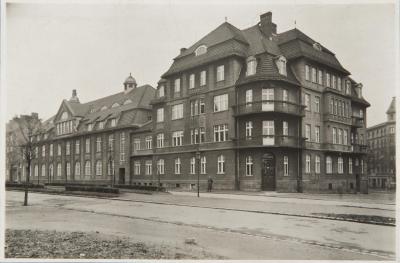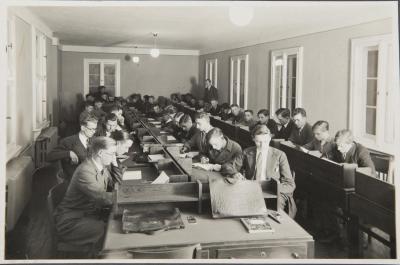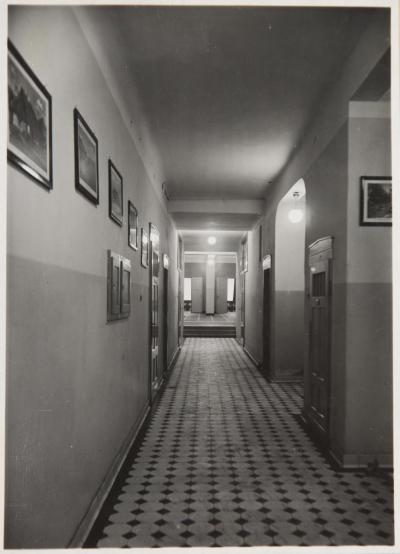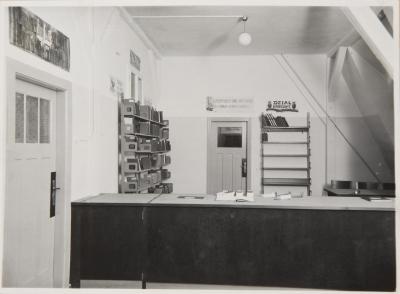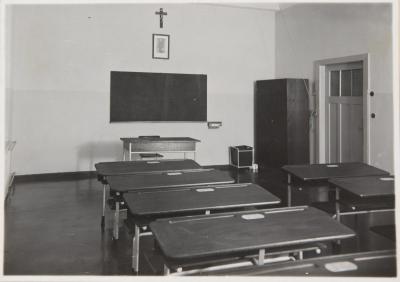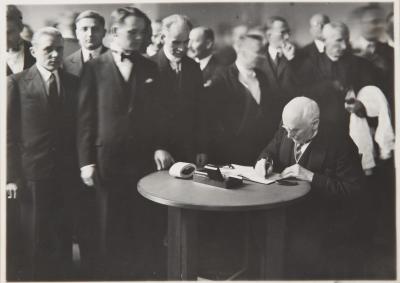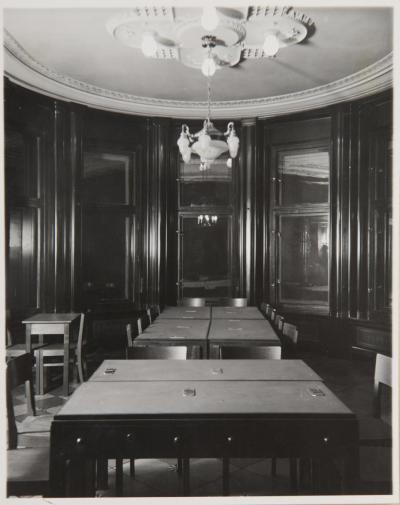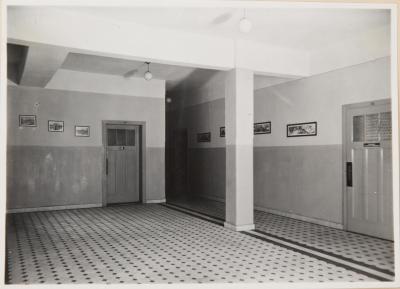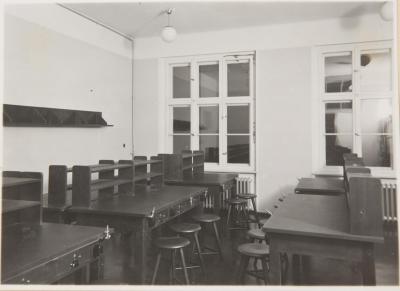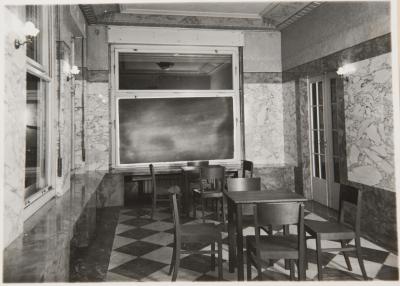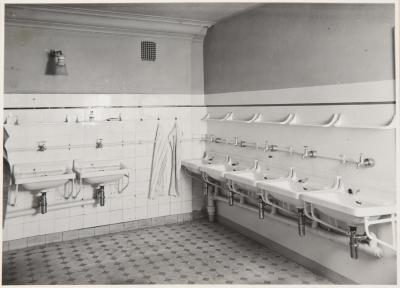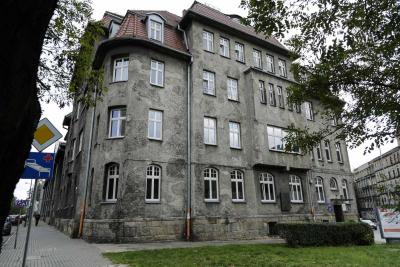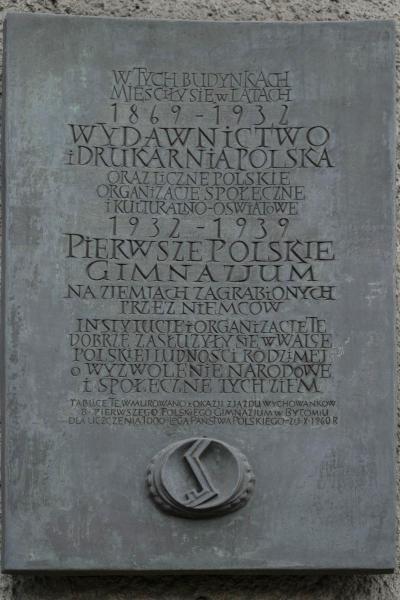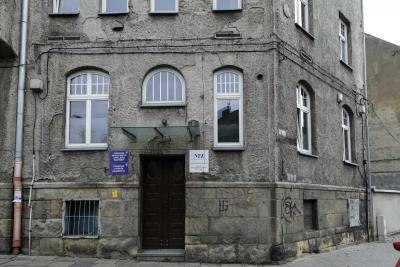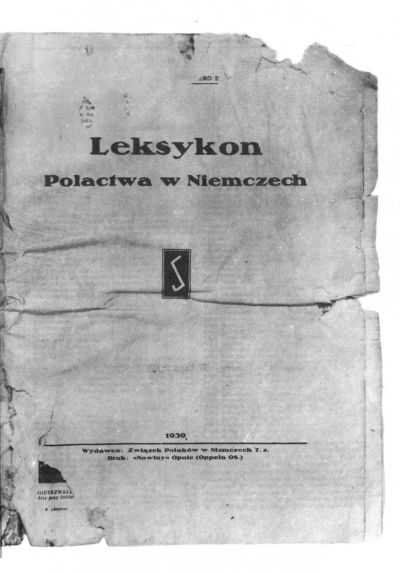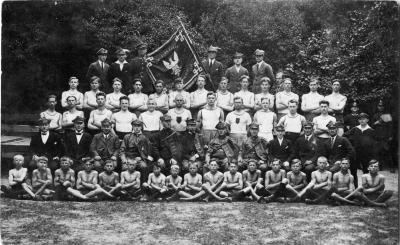The Polish grammar school in Bytom
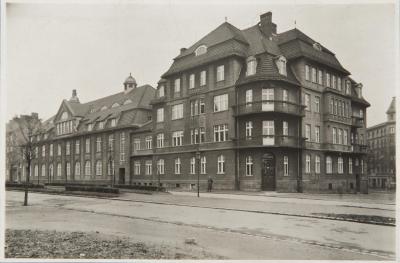
Boarding
Since most of the students came from afar the initiators of the Polish Grammar School had to find suitable accommodation for them as well as medical and domestic care. To this end, at the suggestion of the Federation of Polish School Societies (Związek Polskich Towarzystwo Szkolnych) in Berlin and the Polish Catholic School Society (Polsko-Katolickie Towarzystwo Szkolne) in Opole, an organisation called the Polish Boarding School Society (Towarzystwo Bursa Polska) was set up with its headquarters in Bytom. Amongst the members of the board were Stanisław Weber, the head of the Bank Ludowy (Peoples Bank) in Bytom, Stefan Szczepaniak, the head of the Bank Ludowy (Peoples Bank) in Ratibor and Stanisław Olejniczak, a teacher at the Polish Grammar School in Bytom. According to the foundation’s statute the society’s aims included maintaining and being responsible for boarding the students at the Polish Grammar School, whereby the financial basis would be covered by membership fees and donations provided by the society’s members.[25]
This resulted in the preparation of two student homes, one in the building that had formerly belonged to the Polish consulate in Gleiwitzerstraße 17 (today’s ulica Gliwicka), and the other in a rented villa in Eichendorffstraße 22 (today’s ulica Olejniczaka). Each of the buildings had dormitories catering for between two and four boys. All the rooms were equipped with desks for the students. In addition there were also bathrooms and separate rooms for the sick. The student home in Gleiwitzerstraße 17 also contained three music rooms (for practising the violin, wind instruments and the piano), a handicraft room, a reading room with a radio, a table tennis room, a medical room with a medicine chest, a kitchen and dining room, as well as a guestroom and a secretary’s office. On the ground floor of the building there was a room with a stage that could be used for shows presented by the theatre club. The student home in Eichendorffstraße 22 was much smaller. As well as the standard equipment it also contained a music room, a kitchen, a dining room with a radio, and an office for the teacher in charge. The staff responsible for the students living in Gleiwitzerstraße from 1932 to 1939 were Stanisław Olejniczak (Head), Mirosław Spychalski (medical doctor and teacher), Józef Henke (Head), along with Witold Przybylski, Jerzy Lubos, Jan Smoleń and Józef Mayr. The home in Eichendorffstraße was staffed by Alojzy Gembala (Head), Franciszek Krzykala, Edmund Maćkowiak, Wilhelm Ciałoń, as well as Albert Ratajczak, Marcin Będziński and Stefan Jonca. In 1937 the posts of Boarding School Trustee were introduced and these were held by the heads of the homes. The position of Deputy Trustee was awarded to a teacher selected by the head. [26]
The students were distributed in the two homes according to their age. The home in Gleiwitzerstraße accommodated older students who were studying in the third to the first classes; that in Eichendorfstraße housed younger students who were studying in the sixth to the fourth classes. The learning periods differed according to the levels of the class. From class six to class four it was two and a half hours; in class three, two hours and fifty minutes; and in the second and first classes, three hours and fifty minutes. The students also benefited from organised leisure periods, which they used for learning a musical instrument, gymnastics and participating in cultural events in Bytom. Starting in 1935, students were duty-bound to do Labour Service for the state: this consisted of community service in the countryside or in a National Socialist youth organisation. By contrast, on Sundays there were sporting events, group walks and outings near and far. The two homes catered for around 230 students.[27]
Funding
Attending the Grammar School cost money. That said, the students benefited from financial support from the Grant Fund of the Union of Poles in Germany (Fundusz Stypendialny Związku Polaków w Niemczech) that was set up in 1923. Formally speaking, the grants were intended for students at Polish secondary schools in Germany. The aim behind the grants was to promote the intellectual development of Polish intelligentsia. Bytom set up its own funding institution that went under the name of Towarzystwo Pomocy Naukowej na Śląsk Opolski (Society for Scholastic Promotion in Opolan Silesia). The grants it gave not only supported Polish cultural life but also would-be students. Needy students from working-class and farming families, as well as from middle-class families received financial help to cover their school fees and the cost of their accommodation. The body also supported former students at the Grammar School. These students received grants to enable them to pay their matriculation and term fees..[28]
In order to receive a grant students had to submit an application to the managing board of the commission. Decisions on those who were to receive the grants were made at the general meetings that were held twice a year.[29] The board of management consisted of Stefan Szczepaniak, the head of region number I in the Union of Poles, alongside the President of the Federation of School Societies (Związek Towarzy Sw Szkolnych), Piotr Miętkiewicz, the head of the Grammar School in Bytom, as well as Władysław Wesołowski, Czesław Tabernacki, Stefan Murek, Leon Nawrocki, Jan Różeński, Wittala and the accountant, Józef Kwietniewski.[30] 381 grants were paid out between 1934 and 1938. According to the personal needs of the students amounts ranged between 180 and 555 Marks.[31] A further 160 grants were awarded in the 1938/1939 academic year.[32] And another 52 grants were awarded before the start of the Second World War.[33] Around 65% of the 505 students at the Bytom Grammar School benefited regularly from grants awarded by the fund.[34]
From 1935 to 1939 the Polish Grammar School also contained a day nursery consisting of two rooms, each with its own entrance.[35] In 1935 it catered for 46 to 58 children; in 1936, for 47 to 49 children; and similarly in 1937, between 48 and 49. The children in the nursery school were aged between three and six and most of them came from the families of miners, railway workers and shoemakers. A large proportion of the children, around 40%, came from families who suffered from unemployment.[36] The cost of the rooms was met by the Union of Poles Abroad (Związek Polaków Zagranicą). Contributions from parents helped to purchase resources for the children and to cover the administration costs of the day nursery.[37]
Joanna Lusek, December 2013
[25]APO, 1, Sign. 136, S. 77 – 93; “Nowiny Codzienne”, dated 13. October 1932; J. Lubos, Dzieje polskiego gimnazjum…, p. 122.
[26] APK, 683, Sign. 4, pp. 18–23, Student home. Annual report 1937/1938; Sign. 2, Annual report 1935–1936, pp. 16–17; Sign. 302, Sprawozdanie z bursy za rok szkolny 1936–1937 [Student home. Annual report 1936/1937].
[27] APK, 683, Sign. 4, pp. 18–23, Student home. Annual report 1937/1938.; Sign. 2, Annual report 1935–1936, pp. 16–17; Sign. 302, Sprawozdanie z bursy za rok szkolny 1936–1937 [Annual report of the students’ home 1936/1937]; Sign. 305, Sprawy bursy (1932–1936) [Student home affairs (1932-1936]; Sign. 307, Arkusze ewidencyjne bursaków (1937–1939) [Personal information on the students living in the homes (1937-1939)]; Sign. 188, Korespondencja w sprawie wycieczek (1937–1939) [Correspondence on school outings (1937-1939)]; Sign. 189, Korespondencja w sprawie Reichsarbeitsdienst (1937) [Correspondence on Reich Labour Service (1937)]; L. Ręgorowicz, Wykonanie niemiecko-polskiej, pp. 104–105.
[28] APK, 12/645, Akta Miasta Bytomia [Bytom municipal files], Sign. 4271, Polnisch–Katholischer Schulverein (1923); W. Wawrzynek, Polskie stowarzyszenia akademickie na Śląsku Opolskim w latach 1924–1939, Opole 1963, p. 8.
[29]APK, 683, Sign. 214, Komitet Funduszu Stypendialnego (1935–1939) [Grant Fund Commission (1935-1939)].
[30] APK, 683, Sign. 214, Sign. 214, Bl. 5 und 49.
[31] APK, 683, Sign. 214, Sign. 214, Bl. 24–38, 55–61, 89–92, 106–115, 123–124.
[32] APK, 683, Sign. 214, Sign. 214, Bl. 39–47.
[33] APK, 683, Sign. 214, Sign. 214,pp. 3–4.
[34] J. Lubos, Dzieje polskiego gimnazjum…, pp. 196–212.
[35] APK, 683, Sign. 303, Ochronka w Bytomiu – lista obecności dzieci (1935–1936) [Nursery school in Bytom – children’s attendance register (1935-1936)].
[36] APO, 1191, Rejencja Opolska, wydz. I [Governmetn district of Opole, dept. I], Sign. 303; Sign. 310, Rachunki dotyczące ochronki (1936–1937) [Nursery school. Invoices (1936-1937)].
[37] APO, 1191, wydz. I, Sign. 309, Rachunki dotyczące ochronki (1935–1936) [Nursery school. Invoices (1935-1935)]; Sign. 310, Rachunki dotyczące ochronki (1936–1937) [Nursery school. Invoices (1936-1937)]; Sign. 311, Dochody i rozchody dotyczące ochronki (1937–1938) [Nursery school. Income and expenses (1937-1938)]; Sign. 312, Dochody i rozchody dotyczące ochronki (1938) [Nursery school. Income and expenses (1938)]; Sign. 313, Dochody i rozchody dotyczące ochronki w miesiącu wrześniu (1939) [Nursery school. Income and expenses im September (1939)]; Sign. 314, Dochody i rozchody dotyczące ochronki w miesiącu październiku (1939) [Nursery school. Income and expenses im October (1939)].
